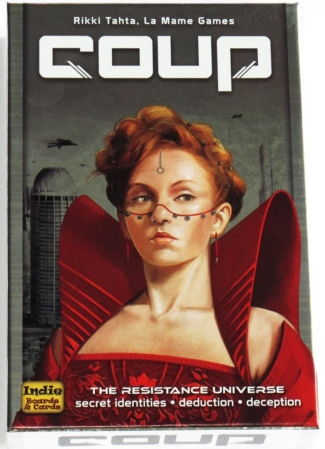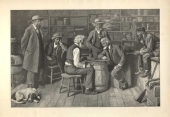The Checker Maven
The World's Most Widely Read Checkers and Draughts Publication
Bob Newell, Editor-in-Chief
Published every Saturday morning in Honolulu, Hawai`i
Noticing missing images? An explanation is here.
See It And Believe It
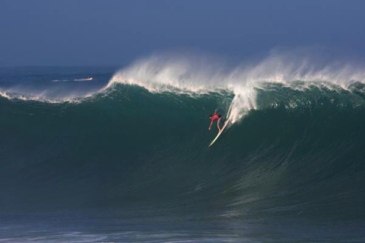
Some things, like this monster wave at famed Waimea Bay on the North Shore of O`ahu, have to be seen to be believed.
In fact, we often hear phrases like, "You have to see it to believe it," to refer to something far out of the ordinary; "I'll believe it when I see it," to express skepticism; the metaphysical version, "I'll see it when I believe it"; and of course, the ever-popular "I want to believe."
You've definitely got to file today's Checker School entry under "you have to see it to believe it." We won't spoil the fun by explaining quite yet; we'll just say that this one is--- well, truly something else. Let's take a look at the position.
BLACK
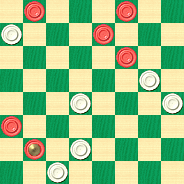
WHITE
White to Play and Draw
W:W5,16,18,20,26,30:B1,3,7,11,21,K25.
Black has a slight superiority in force (a king vs. a man), but White has more mobility, and that's a huge hint to the problem's solution. We consider this one pretty tough and a real test of visualization skill. It's definitely worth spending some time on, even if you don't get it. After you do, we're sure you'll find it quite believable that clicking on Read More will show you the annotated solution and half a dozen sample games.![]()
Marvin Visits Waikiki

Marvin J. Mavin, famed team captain of the Detroit Doublejumpers in the National Checker League, was on a vacation. The World Series of Checkers had just concluded, with the Doublejumpers taking the championship for the third straight year.

Marvin had eight weeks off before the next season got underway at the first of the new year, and he decided to spend a few weeks in Hawai`i. His girlfriend, business executive Priscilla Snelson, could only spend a week with him due to a busy schedule doing mergers and acquisitions.
It was about halfway through Marvin's stay. Priscilla had gone off to Japan, searching for companies to buy out. Marvin was staying at the Hilman Hawaiian Village in Waikiki, and he loved to walk on Kalakaua Avenue along the beach. He'd wear beach slippers and a hat to try to remain incognito. Not that he didn't care about his many fans; he just needed a little time off between seasons.
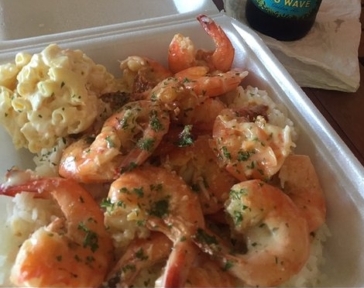
Marvin had just finished eating a Hawaiian plate lunch, with macaroni salad, rice, and garlic shrimp. He loved the local food and could be heard to say, "I ain't paying thirty bucks for a tofu burger at the hotel." Feeling good, and enjoying the beautiful Hawaiian weather, he strolled on down Kalakaua with the goal of going all the way to the Aquarium and back.
At Kealohilani Avenue, he stopped for a moment at the beach tables, where visitors and locals would play checkers all through the day and evening. Each time he passed by, Marvin resisted the urge to sit down and play, and possibly reveal his identity. But today one of the tables looked especially interesting.

A succession of tourists were playing a rather rough looking local, and Marvin guessed he was probably homeless. But he was playing very well, defeating one challenger after another, and collecting five dollars every time. Marvin suspected that playing for money wasn't quite legal, but no one seemed to mind.
It was just too much. Marvin felt himself weakening, and after watching half a dozen games and just as many five dollar bills go to the local guy, Marvin spoke up.
"I'd like to try," he said, addressing the local guy, who had just pocketed some more money.
"I Charlie," the guy said. "Dey call me 'Cheap Charlie' 'cause noboddy nevah get five bucks offa me. You wanna play? You no get nothin' neithah. Show me da five bucks and den I give you lickens."
"Well, uh ..." Marvin hesitated. Would this really be fair?
"Scared? Den step aside, brah, oddah playahs stay waitin'."
No one accused Marvin of being scared. Grim faced, he pulled out ten dollars and set it next to the board.
"Ten dollah! Hoo, you one crazy haole! You like give me money, I like take it." Charlie placed two fives on top of Marvin's ten.
Marvin sat down. "Play," he said, his lips narrowed.
"Whatevahs," Charlie said, and the game began.
A small crowd had gathered, and amazingly, Marvin's disguise was working; no one recognized him.
The Trade Winds were brisk this afternoon and Marvin put a couple of captured checkers on top of the five and ten dollar bills.
"Dat money ain't going noweah," Charlie said, "'cept fo' my pocket!"
That got a laugh from a few of the bystanders. But the fact was, Charlie had made a few small errors, and Marvin knew that a win was on his doorstep. A couple of the more astute onlookers suspected the same thing, but they kept a discreet silence.
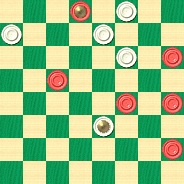
BLACK
Black to Play and Win
B:W30,28,26,22,K10:BK31,21,19,14,13,5.
Marvin spent a couple of minutes in thought, and then, sure of himself, he reached out to make his move.
He took his hand off the piece and looked up. To his surprise, the crowd of spectators had completely disappeared.
"What's going on ..." he began, and then felt a heavy hand on his shoulder.
"You two bums gambling? You know that's illegal." The speaker had a little wallet flipped open to show his Honolulu Police Department badge.
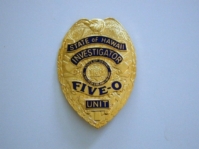
"Aw, c'mon officah, we just havin' fun," Charlie said.
"Gambling?" Marvin said. "But checkers is a game of skill and ..."
"Shut up, you," the plainclothes policeman said. "I don't care what you say, it's not legal, and both of you know it. But I'm feeling generous today so you got a choice."
Marvin was fidgeting but Charlie, who had clearly been through this routine before, sat quietly.
"All right, officer," Charlie said. He pulled out a plastic bag and began to pack the checkers.
"Hey, our game!" Marvin objected.
"Okay, buddy," the officer said, looking at Marvin. "The homeless shelter or a trip downtown to headquarters?"
"The homeless shelter? But I'm ..."
"Good choice, boy. Saves me doing the paperwork it'd take to lock you up. Now come on, you two, there's a cruiser over there that'll drop you off at the Mission. And we better not see you leave until morning."
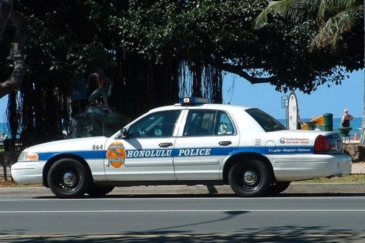
"But ... but I'm ..."
"One more word outta you and you wait in jail to see the judge."
Marvin noticed the officer slipping the game money into his pocket, but he didn't think it would be a good idea to say anything.

Can you find a winning sequence in the diagram above? It's a much easier problem than you might expect! See if you can solve it without getting nabbed, then click on Read More to go, not to jail, but to see the solution.![]()
Mr. Darcy Plays Draughts
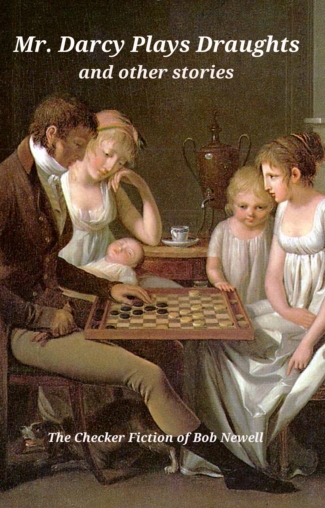
Our new book is out and available on CreateSpace and Amazon! This column is something of an advertisement, we hope forgivably, for Mr. Darcy Plays Draughts and Other Stories: The Checker Fiction of Bob Newell. Net proceeds, if any, will help defray the ever-increasing costs of Checker Maven web hosting.
The book is a collection of some of the best stories appearing in this column over the past years, plus one brand new one, the title story, Mr. Darcy Plays Draughts. Why is Elizabeth suspicious when Mr. Darcy takes up a seemingly innocent interest in the game of draughts?
Read the book and find out. But we'll give you a hint right here by presenting a checker problem closely related to those that appear in the story (and no, we're not going to give any more than that away).
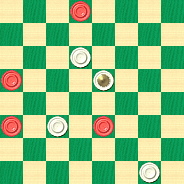
WHITE
White to Move and Win
W:W32,22,K15,10:B23,21,13,2.
As always, solve the problem, and then click on Read More to verify the solution and learn more book ordering details!![]()
The Leaves Fall Quickly
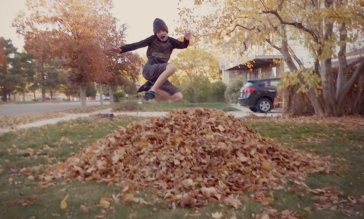
In the autumn, the leaves can fall quickly. In the photo above, Junior is having a great time with the autumn leaves. Dad may have somewhat less fun when it comes time to bundle them up and dispose of them.
Quickly falling leaves inspire one of the easiest speed problems we've published in a while. Of course, you know the catch; you'd better be quick because we're only giving you five seconds.
Click on the link below to display the position and start the clock. Then, quick as can be, come back and rake your mouse on Read More to check your solution.
October Speed Problem (very easy, 5 seconds)
![]()
The 4th Catalan Number

As we continue to explore the Kelso opening with Willie Ryan and his classic book Tricks Traps & Shots of the Checkerboard, we reach our 14th installment on this fascinating opening.
There's almost nothing special about the number 14, except perhaps that it's what's known as a Catalan number, the 4th Catalan number, to be precise. Catalan numbers are named for Belgian mathematician Eugène Charles Catalan, and appear in various applications in the branch of mathematics known as combinatorics. The simple(!) formula for Catalan numbers is given above. Catalan numbers also appear in graph theory; in particular, Cn is the number of non-isomorphic ordered trees with n vertices, as also shown above. (If you don't quite follow that, watch the movie Good Will Hunting.)
But enough math! By now you're surely ready for some checkers. Here's the run-up to today's position.
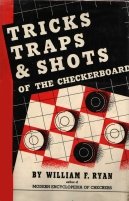
| 1. | 10-15 | 22-18 |
| 2. | 15x22 | 25x18 |
| 3. | 6-10 | 18-14 |
| 4. | 10x17 | 21x14 |
| 5. | 9x18 | 23x14 |
| 6. | 1-6 | 29-25 |
| 7. | 12-16 | 26-23 |
| 8. | 16-19 | 24x15 |
| 9. | 11x18 | 28-24 |
| 10. | 8-11 | 31-26 |
Willie offers 31-26 as an alternative to 24-19, the latter of which he calls "A natural though timid move."
| 11. | 4-8 | 23-19 |
| 12. | 6-9 | 19-15 |
| 13. | 11-16 |
Willie correctly says that 9-13 should have been played here and that now "Black will have to do more than whistle to get past the graveyard."
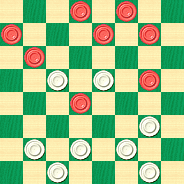
WHITE
White to Play and Win
W:W32,30,27,26,25,24,15,14:B18,16,9,8,7,5,3,2.
Higher math skills are not required here, just rather high over the board checker skills. This is not an easy problem, but there is still no need to apply combinatorics or graph theory (unless you really want to), as you can always check your solution by simply clicking your mouse on Read More.![]()
More Than One Way To Do It

"There's more than one way to do it" is a common enough phrase, and it seems to have gotten attached to the scripting language Perl, due to Perl's extreme (some say excessive) flexibility. At The Checker Maven Perl scripts figure prominently in our computer work, and, even though the modern trend is more towards the Python language, we persist. But that discussion is even further off-topic.
Today's problem, submitted by regular contributors Lloyd and Josh Gordon of Toronto has two main solutions, hence "more than one way to do it." One of the solutions occurred in over the board play, while the other, which is quite different, is due to KingsRow computer analysis.
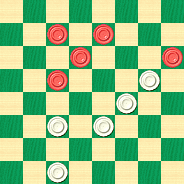
WHITE
White to Play and Win
W:W30,23,22,19,16:B14,12,10,7,6.
Which solution will you find? Can you see them both? To find out, there's only one way to do it: click on Read More.![]()
Cowan's Coup Revisited
Just over five years ago, we published a column on Cowan's Coup based on analysis by Willie Ryan. This week in our Checker School entry, we'll revisit the position and gain the benefit of Ben Boland's viewpoint, as expressed in his classic Famous Positions in the Game of Checkers.
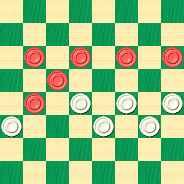
BLACK
White to Play and Draw
W:W24,23,21,20,19,18:B17,14,12,11,10,9.
No matter what move White makes, he's going to lose two men at once. Yet we're asked to find a move that draws.
Is this a coup that you can pull off? Please do try; after all, this is a non-violent coup. But if the solution eludes you, or you'd just like more insight, you can click on Read More to see one way to do it along with numerous sample games and an explanatory note or two.![]()
Labor Day Salute
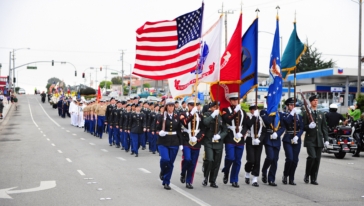
Labor Day; it's a welcome day off work, a last hurrah for summer in North America, a time to see a parade, or squeeze in one more barbecue or picnic or camping trip before the leaves fall and the nights become chill.
And, as we point out each year, it's a time to show our respect for the average Jane and Joe that make up America's workforce, those honest, decent, hard-working people who show up every day, do their jobs, and help make America what it is. There was a time when checkers was their game, and although that's less of a truism today, checkers remains democratic, accessible, and suitable for everyone.
On holidays like these, we like to feature great American players and problemists. Today we have one of the few problems authored by one of the greatest American checkerists of all time, Samuel Gonotsky. It is based on actual over the board play.
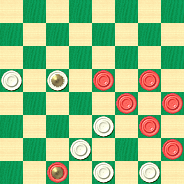
WHITE
White to Play and Draw
W:W32,31,26,23,K14,13:BK30,28,24,20,19,16,15.
White is a man down but has mobility advantages. Can the situation be turned into a draw? Labor away at this one; but seeing the solution is hardly laborious and requires only a mouse click on Read More.![]()
Don't be a Square

"Don't be a square" is probably an expression you haven't heard much lately, as it's long out of date. It actually originated with jazz musicians but by the 1980s, it was starting to sound old-fashioned.
Our use of this phrase to title our column is for two reasons. The first is the shape seen in the problem diagram.
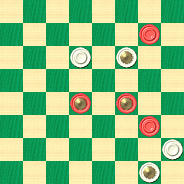
BLACK
Black to Play and Win
B:W23,K22,5,K1:B25,K15,K14,9.
The second meaning derives from the solution itself. You might see what we're getting at when you solve it. It's not overly difficult. Don't be a square--- try to work it out. When you're finished, click your mouse squarely on Read More to see the solution and an explanation.![]()
The Crocodile Position

There's been a lot in the news in recent months about alligators attacking humans, sometimes with tragic results. But crocodiles, particularly the South Pacific varieties, can also be very dangerous.
The differences between crocodiles and alligators are many, even if they seem to be similar creatures. For instance, they have different jaw shapes, and crocs are more tolerant of saltwater environments.
The position below, an entry in our ongoing Checker School series, could be either crocodile or alligator. In fact, as you'll see in our solution notes, it's been called both at various times. But regardless of name, it's quite ferocious.
W. H. RUSSELL
BLACK
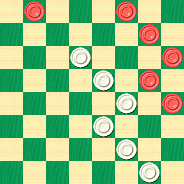
WHITE
White to Play and Win
W:W10,15,19,23,27,32:B1,3,8,12,16,20.
Don't get caught up in the jaws of this one; work it out and then snap your mouse on Read More to see the solution, sample games, and detailed notes.![]()
The Checker Maven is produced at editorial offices in Honolulu, Hawai`i, as a completely non-commercial public service from which no profit is obtained or sought. Original material is Copyright © 2004-2025 Avi Gobbler Publishing. Other material is public domain, as attributed, or licensed under Creative Commons. Information presented on this site is offered as-is, at no cost, and bears no express or implied warranty as to accuracy or usability. You agree that you use such information entirely at your own risk. No liabilities of any kind under any legal theory whatsoever are accepted. The Checker Maven is dedicated to the memory of Mr. Bob Newell, Sr.
